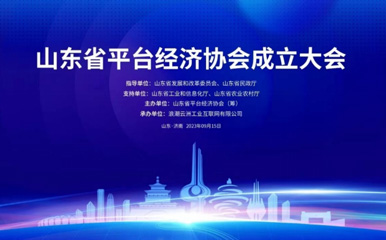Recently, Junrun Human Resources and the Institute of Human Resources Management at Jinan University jointly launched the "2024 White Paper on the Development of Flexible Employment in China". The white paper uses research methods such as large sample data analysis and interviews with industry experts to sort out the various forms and types of flexible employment, review its development history, deeply analyze the current status and future development trends of relevant policies and regulations, and explore the impact of flexible employment on enterprises, workers, and society.
Due to the rich information and lengthy length of the white paper, we will divide the key content into two parts for sharing.
In the context of rapid development of digital technology and highly uncertain external market environment for enterprises, the government continues to introduce measures to encourage flexible employment, and professional human resources service agencies continue to emerge. Enterprises are facing more and more challenges and changes. In order to meet the diverse market demands and improve the efficiency and flexibility of employment, more and more enterprises are beginning to attach importance to flexible employment. According to relevant data, about 60% of enterprises in China are using flexible employment, and more and more enterprises are inclined to expand the scale of flexible employment. The rise of flexible employment not only brings more choices and opportunities for enterprises, but also injects more vitality and momentum into the entire labor market.

As a new type of employment model that is currently receiving much attention, flexible employment can increase the flexibility and efficiency of enterprise employment, especially when facing business adjustments and organizational restructuring, flexible employment can effectively achieve transformation. In order to better understand the concept, types, and new features of flexible employment, we will analyze them by answering three questions.
What is' flexible employment '
Flexible employment refers to the sum of employment forms, work methods, service forms, and other forms of employment that are relatively flexible for employment organizations and different from traditional standard employment. Its essence is the flexibility of employment relationships, with the aim of achieving flexible allocation of organizational human resources.

Flexible employment: manifestations and forms of "flexibility"
What are the connections and differences between flexible employment and related concepts
1. Flexible employment and flexible employment
Connection: Both emphasize flexibility, and their extensions are generally consistent.
Difference: The two are two sides of the same coin, each with different focuses. Flexible employment is described from the perspective of the employer, emphasizing the form of employment in which the employer fully utilizes external human resources of the organization; Flexible employment, on the other hand, approaches from the perspective of workers, emphasizing the employment status in which workers provide labor.
2. Flexible employment and gig economy
Contact: Both flexible employment and odd job economy benefit from the development of Internet technology. Both of them work through the platform and get paid, which is inseparable from the online platform.
Difference: The essential difference lies in the difference between economic and employment models: gig economy belongs to an economic model, which is a way of resource allocation. The subjects directly involved are not only enterprises and gig workers, but consumers are actually also under the gig economy model; The essence of flexible employment is a mode of employment, in which the main entities are enterprises that adopt this form of employment and workers who accept this form of employment There are differences in the identity of workers: the gig economy emphasizes the independence and autonomy of workers, while flexible employment only focuses on the flexibility of enterprises in the employment process, without emphasizing the identity of workers in flexible employment. Therefore, workers can be independent and autonomous in flexible employment, or have an employment relationship with a third-party enterprise.
3. Flexible employment and sharing economy
Contact: The development of the sharing economy has promoted the development of flexible employment by influencing the labor market environment. Specifically, it is manifested in the diversification of employment entities, the flexibility of employment forms, and the diversification of employment relationships The resources shared in the sharing economy include the main human resources of flexible employment; ③ Both are aimed at improving efficiency and saving costs.
Difference: ① The idle resources shared in the sharing economy model include various types of resources such as idle manpower, material resources, financial resources, and information, while flexible employment is limited to individual human resources, which can specifically include physical strength, skills, knowledge, experience, etc.; ② The sharing economy can include different forms of employment, such as labor relations, gig work relations, and labor relations; Flexible employment does not include labor relations; ③ In terms of motivation, the motivation for adopting flexible employment is generally economic, while the motivation for participating in the sharing economy may include social and environmental motivations in addition to economic motivation.
4. Flexible employment and digital gig work
Connection: Digital gig work is an advanced form of flexible employment, and the two are essentially the same: there is no fixed employment relationship between employers and workers.
Difference: ① digital odd jobs rely on digital technology and Internet platform, with a wider coverage, while flexible employment is generally offline, with a limited and dotted coverage; ② Digital gig work is an emerging profession that integrates individuals' own career planning, and flexible employment is only a supplement to the formal employment model The main groups of digital gig workers are the middle class and white-collar workers, while the main groups of flexible workers are generally blue collar workers and manual laborers.

Definition and emphasis of flexible employment and other related concepts
What are the types and characteristics of flexible employment
1. Employment based flexible employment
Flexible employment based on employment is formed by the flexibility of some characteristic elements of the employment relationship. Among them, the flexibility of part-time employment is reflected in working hours; The flexibility of labor dispatch is reflected in the form of employment; The flexibility of internships and rehires is reflected in the employment subject; Shared employees demonstrate flexibility in job categories.
2. Labor based flexible employment
Labor based flexible employment has independence in personality and is not subject to organizational management. Among them, labor contracting and labor outsourcing both demonstrate flexibility in service forms.
3. Business oriented flexible employment
Business oriented flexible tools have strong independence. Among them, self operation refers to the operation of individual self-employed individuals who are responsible for their own profits and losses, and labor has the right to engage in independent economic activities such as production, exchange, and distribution. Individual business refers to a group of individuals who have already registered as market entities, do not belong to any organization, and engage in a certain profession without making long-term commitments to any employer. New forms of employment are various flexible business forms that have emerged in new economic scenarios such as digital economy and platform economy, relying on online platforms.
By answering the above three questions, we can gain a more comprehensive and in-depth understanding of the concept, types, and new features of flexible employment, providing guidance for enterprises and workers to make more informed decisions and choices in flexible employment.
In the next issue, let's take a look at the current development status and challenges faced by China's flexible employment industry.
(Source: Junrun Human Resources)















